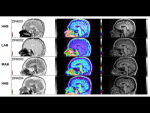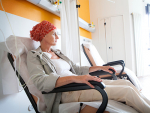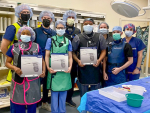Displaying items by tag: department of radiology
Muhammad Ali Abdullah is graduating with two degrees, profound research and clinical experience, and memories to cherish for a lifetime; he will be returning to UAB this July as a medical student.
Tagged under
Tagged under
UAB competed against 13 international teams from academic institutions and commercial entities that participated in the competition.
Tagged under
Tagged under
The O’Neal Comprehensive Cancer Center at UAB is recruiting Alabama women who have never had breast cancer for the study, to test a personalized approach to breast cancer screening.
Tagged under
Physicians in the O’Neal Comprehensive Cancer Center at UAB are advancing the field of thyroid care with cutting-edge, patient-specific procedures and collaborative research investigations.
Tagged under
The baby boy, born in late May 2023, is the first baby born from a uterus transplant outside of a clinical trial and UAB’s first baby from its uterus transplant program.
Tagged under
- release
- university of alabama system
- uab medicine
- school of medicine
- transplantation
- comprehensive transplant institute
- department of surgery
- division of transplantation
- department of obstetrics and gynecology
- division of gynecologic oncology
- division of maternal fetal medicine
- division of reproductive endocrinology and infertility
- department of radiology
- department of pathology
- department of medicine
- division of infectious diseases
- department of pediatrics
- womens history
Cure HHT has named the HHT Clinic at UAB Hospital a Center of Excellence. Only hospitals equipped with the proper personnel, expertise, commitment and resources to provide comprehensive evaluation, treatment and education to individuals with HHT and their families receive this designation.
Tagged under
Description of this mechanism offers a promising therapeutic target to limit lung injury and death. Lower respiratory tract infections, including bacterial pneumonia, are the fourth-leading cause of death worldwide, with 120 million to 156 million cases and 1.4 million deaths a year.
Tagged under
This is the first example of a chelator-free-radiolabeled polymersome capable of a long-term multiday positron emission tomography, or PET, imaging study in vivo.
Tagged under
Neuroengineering blends engineering principles with neuroscience to find better ways to treat neurological conditions and to build on understanding how the brain and nervous system function.
Tagged under
The findings indicate that inflammation is present in the brain early in the disease’s progression, but how inflammation affects disease progression remains unknown.
Tagged under
The study’s goal is to limit the toxic side effects common to many cancer therapies while not affecting their therapeutic benefits.
Tagged under
Cardiac intelligence uses artificial intelligence to monitor patients for cardiac disease and progression.
Tagged under
New screening guidelines and improvements in diagnostics and treatment have improved outcomes in lung cancer.
Tagged under
Tagged under
This institutional award recognizes contributions to the medical field and support for the high standards of medical care.
Tagged under
The deciphering of a new signaling cascade sheds light on how mutations in metabolism cause normal cells to become cancerous.
Tagged under
The EMBOLD Fibered Detachable Coil System is used in embolization procedures and may help improve procedure efficiency and patient outcomes.
Five UAB graduate students received more than $118,000 in awards to strengthen graduate research projects.
Tagged under



















